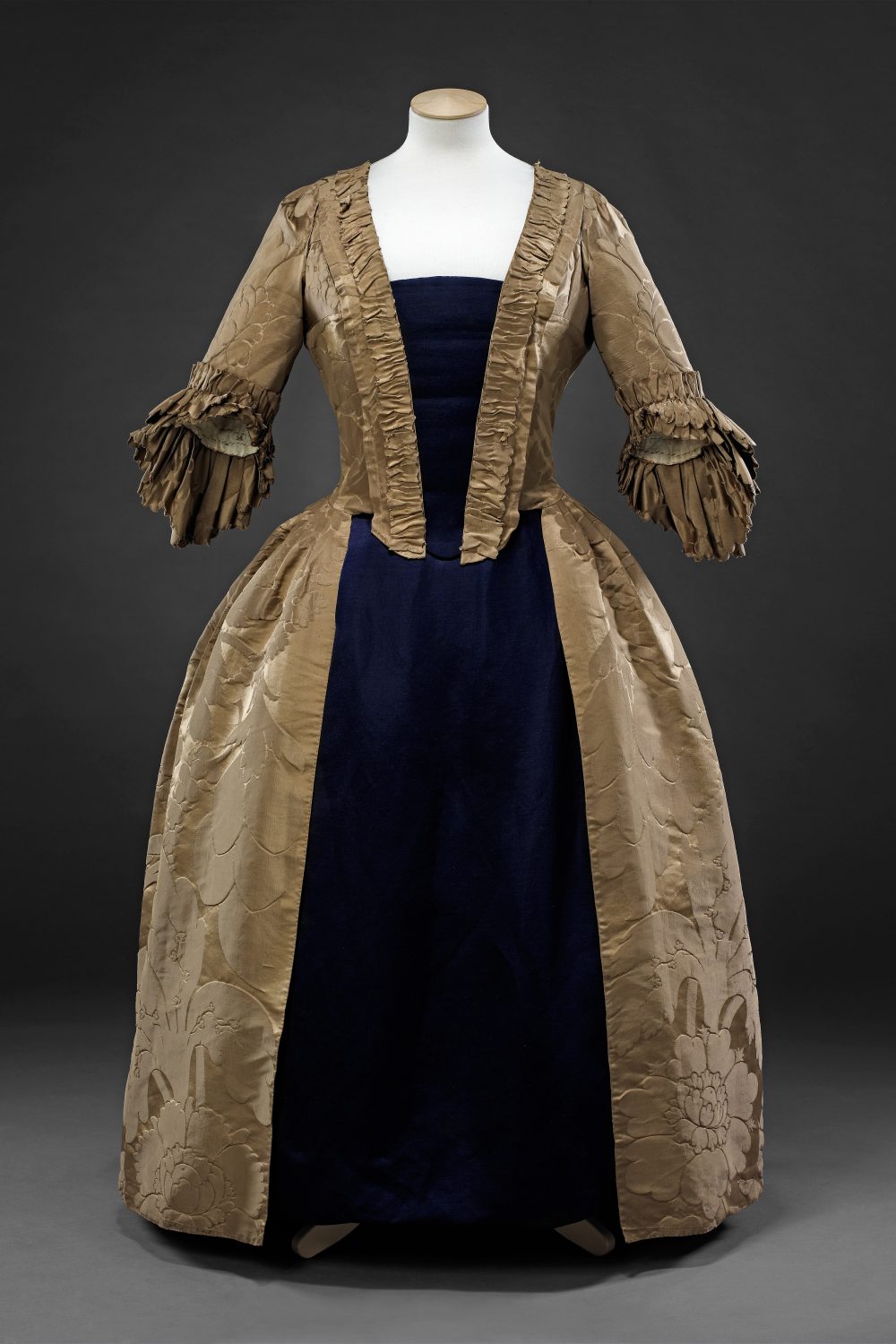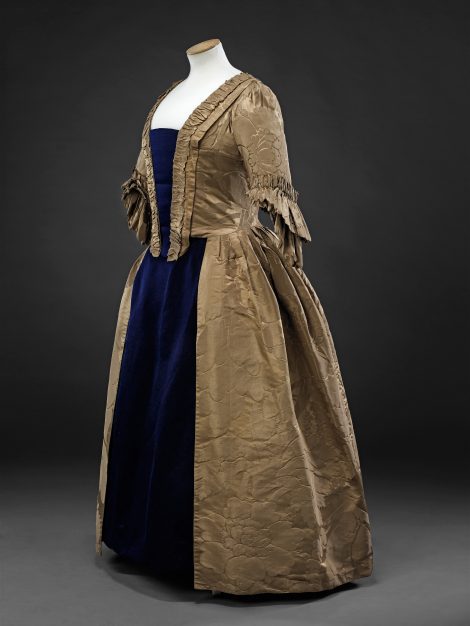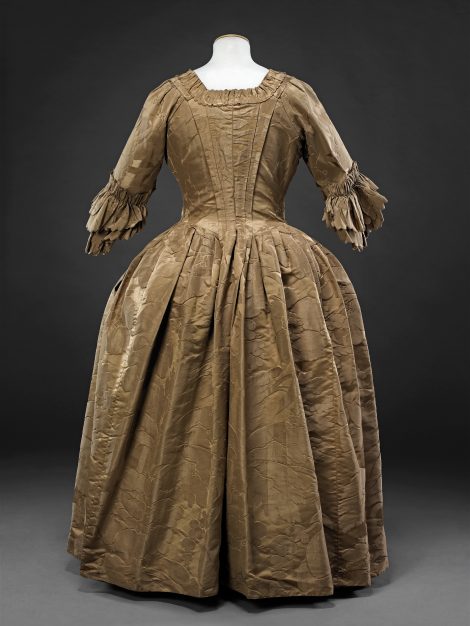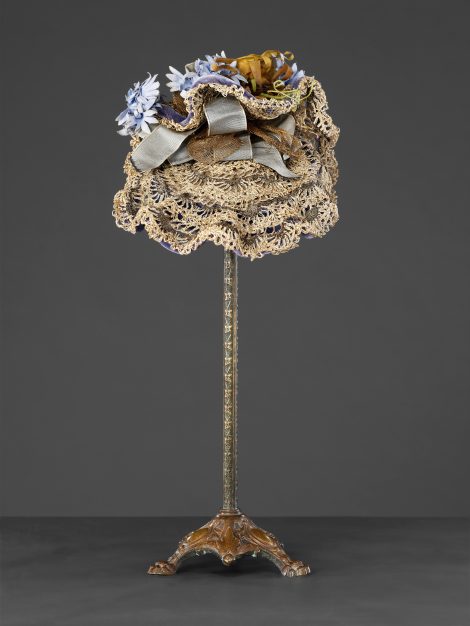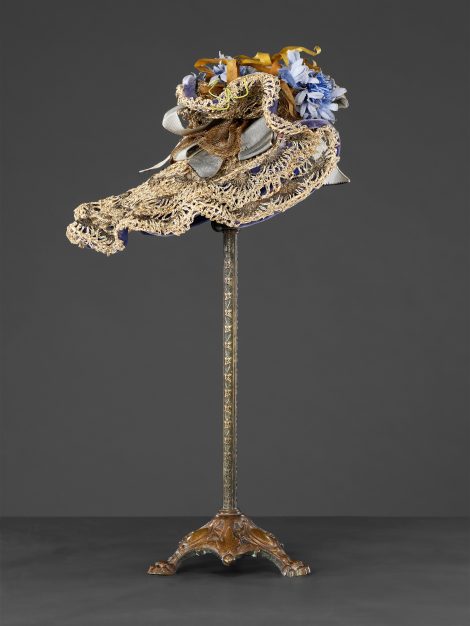This damask gown came from a family collection in the Rutland area. It dates from the 1750s when decorative features such as its ruched and scalloped front borders and double sleeve ruffles began to replace the more severe styles of the previous decades. The silk damask, possibly a few years earlier in design, was produced by two different structures to the weave, one warp faced, the other weft faced, so that the pattern appeared matt on a glossy ground. The silk is so dense that the edges of the motifs appear to stand away from the ground. At the time it was generally considered that damasks looked best in large, well-defined designs such as this, especially as they were also used for furnishings, and brown was a favoured choice of colour. In 1746 Anne Willing of Philadelphia was painted in a dress of brown damask imported from London where it was designed and woven. The artist has depicted the dress in two shades of brown, to suggest the different ways the light fell on the silk – light for the lustrous satin ground, and darker for the dull matt motifs, although in reality they were the same colour.
The gown’s bodice, fitted at the back with stitched-down pleats, is lined in sturdy linen, while the lining of the skirt, taking less strain, is of fine silk that matches the brown of the damask exactly. On each side slits below the waist allowed access to separate pockets beneath. The pinked scalloped edges of the sleeve ruffles and front borders were cut with the sharp edges of a special metal pinking iron. This was a widely used decorative effect over the following decades.
Originally the gown was accompanied by a dark inky blue silk quilted petticoat (here recreated), and a small bonnet, incorporating lighter shades of both garments, that was made in the 1890s to wear with the outfit as fancy dress. (See Additional Images)
